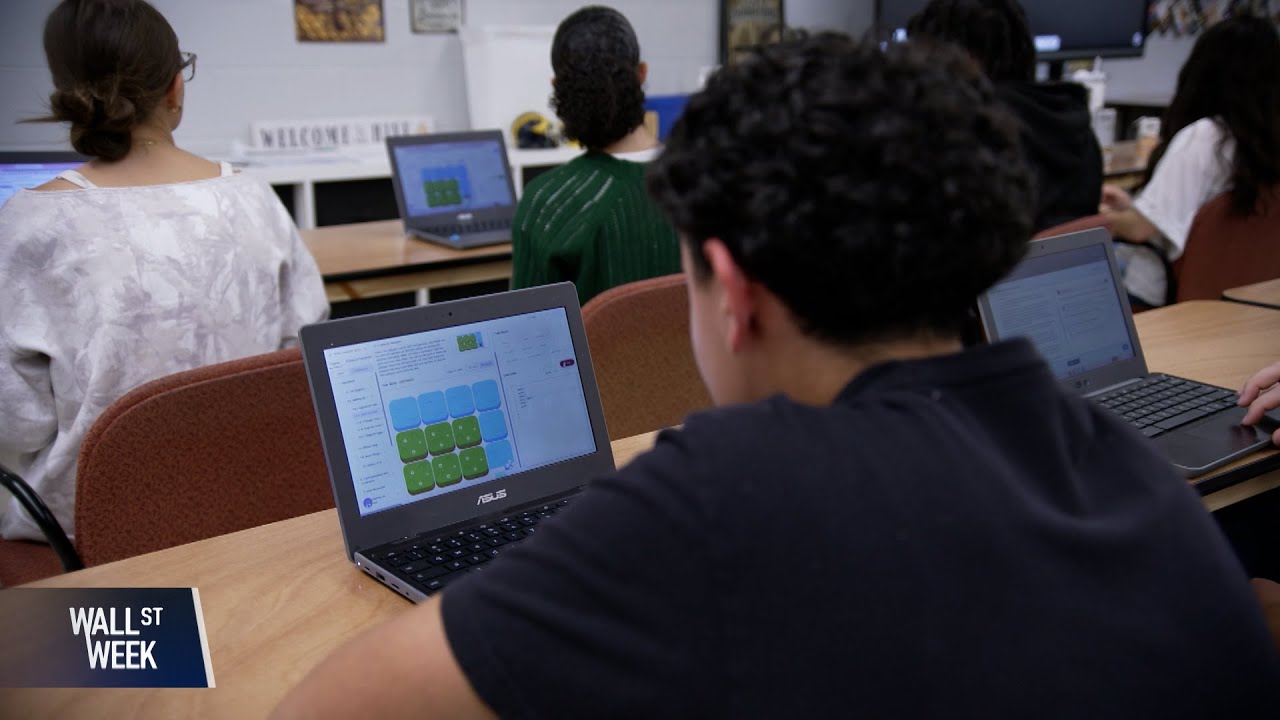The video emphasizes that AI is a valuable tool that supports and enhances teachers’ ability to provide personalized learning and reduce workload, rather than replacing them. While AI offers significant benefits like customized tutoring and administrative assistance, the essential human role of teachers in inspiring and connecting with students remains irreplaceable.
The video explores the evolving role of artificial intelligence (AI) in education, focusing on how it supports teachers rather than replacing them. It highlights the importance of teachers as inspirational figures who shape students’ futures, emphasizing that the traditional classroom model—with a single teacher and many students—is no longer effective. AI offers the potential to customize learning experiences, allowing teachers to tailor instruction to individual student needs, thereby enhancing engagement and understanding.
One example presented is Lance Key, a computer science teacher in Tennessee, who uses AI-powered tools like the Kira platform to provide personalized tutoring and real-time feedback to his students. This technology acts as an assistant, helping students work through problems and freeing teachers to focus on one-on-one interactions. AI also helps reduce teachers’ workload by automating tasks such as grading essays, plagiarism detection, and providing feedback, which is especially valuable given the looming teacher shortage and high burnout rates.
The video also traces the history of AI in education, noting that while large language models are relatively new, AI applications like cognitive tutors have been used since the 1980s. Recent advances have made AI more conversational and interactive, enabling more natural engagement with students. Despite initial resistance and anxiety around AI, there has been a shift toward curiosity and acceptance, driven by the practical benefits AI offers, such as supporting multilingual classrooms and expanding access to foreign language instruction.
However, the video cautions against overestimating AI’s capabilities. Challenges such as hallucinations (AI generating incorrect information), bias, and the risk of diminishing interpersonal relationships in the classroom are significant concerns. Experts stress that AI is a tool with limitations and should be integrated thoughtfully to complement, not replace, human teachers. Many AI education innovations fail because they do not adequately consider the complex, varied realities of real-world classrooms.
Ultimately, the video concludes that AI’s greatest promise lies in empowering teachers to do what they do best: inspire, encourage, and connect with students on a human level. While AI can democratize access to personalized learning and alleviate some burdens, the irreplaceable human element of care and intent remains central to effective education. Teachers’ roles are evolving, with AI serving as a valuable aid that allows educators to guide and support students more effectively.
